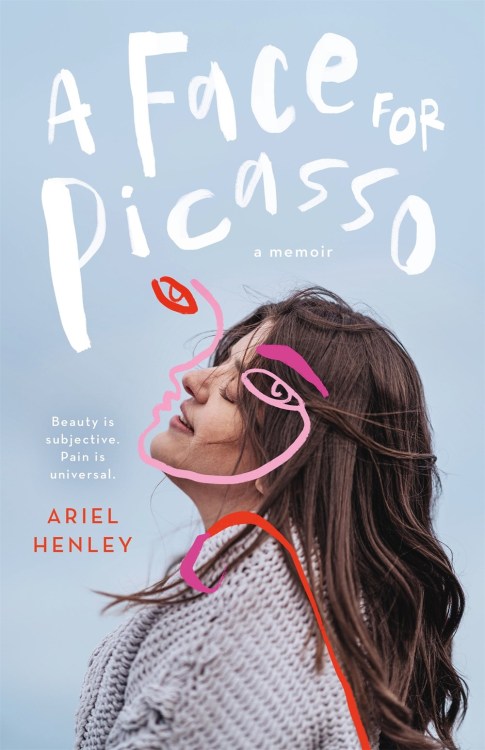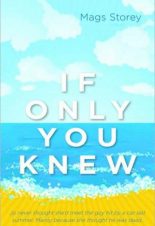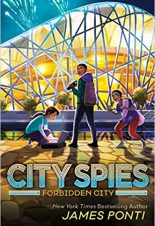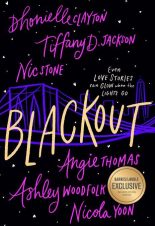
Buy This Book
“I believe we could paint a better world if we learned how to see from all perspectives, as many perspectives as we possibly could. Because diversity is strength. Difference is a teacher,” Hannah Gadsby. –A Face for Picasso
A Face for Picasso
by Ariel Henley
12+
Score
5.9
400
There was danger in the kind of beauty I was desperate to achieve.
At only eight months old, identical twin sisters Ariel and Zan were diagnosed with Crouzon syndrome — a rare condition where the bones in the head fuse prematurely. They were the first twins known to survive it.
Growing up, Ariel and her sister endured numerous appearance-altering procedures to keep them alive. Doctors expanded the twins’ skulls and broke bones to make room for their growing organs. After each surgery, the sisters felt like strangers to each other, unable to recognize themselves in the mirror. Their case attracted international attention. A French fashion magazine said Ariel and Zan “resembled the words of Picasso,” as if they were abstract paintings, not girls just trying to survive.
Later, plastic surgeons cut and trimmed, and tugged their faces toward a tenuous aesthetic ideal. The girls dreamed of appearing “beautiful” but would settle for “normal.”
Fighting for acceptance was a daily chore. Between besting middle school bullies, becoming a cheerleader in high school, and finding her literary voice in college, Ariel learned to navigate a beauty-obsessed world with a facial disfigurement to become the woman she is today.
Ariel’s story is spellbinding and heart-wrenching. While Ariel’s story is not pretty, she brings to light what it means to live with a facial disfigurement. Not only did she and her sister have to deal with the excruciating pain of countless surgeries, but they also had to deal with the cruelty of those around them. From an early age, Ariel had to deal with constant painful encounters with children, teachers, and adults. Ariel said, “the everyday stares, comments, and subhuman treatment were constant reminders of our painful medical history and perceived shortcomings. We were treated as less attractive, less intelligent, and less worthy of basic respect.”
In her memoir, Ariel uses the backdrop of Picasso’s life to help explain how she and her sister were dehumanized. Ariel connects her experiences with Picasso’s work and his hate for women. While the connection is clear, the long descriptions of Picasso’s behavior become tedious. Another negative aspect of the story is that Ariel talks about her obsession with food but does not fully explain how her eating disorder fits into her overall story.
Readers who want a fun, fluffy YA novel should steer away from A Face for Picasso which is an honest memoir about how society’s beauty standards can affect someone who has a deformity. Ariel does not gloss over the painful surgeries, the cruelty of peers or the constant desire to be normal. By reading A Face for Picasso, readers will see how silence can be just as painful as spoken cruelty. Ariel’s memoir will help readers be more compassionate and kinder human beings and hopefully will make them rethink society’s focus on beauty.
Sexual Content
- Because of Ariel’s unrelenting anger, her mother “thought I had been violated because both anger and bed-wetting are signs of sexual abuse.”
- Picasso was “heavily inspired by his obsession with sex.”
- Picasso had several affairs while married to his first wife. He was “a sexual predator” who had sex with a seventeen-year-old. “He would take his young mistress to a cabana he’d rented on the beach and have sex with her. . . she was a child and the affair was illegal at its beginning.”
- One of Picasso’s women “hanged herself” and another one “shot herself.”
- Someone tells Ariel’s friend, “You’re super gorgeous. . . You could be a Playmate.”
Violence
- Picasso had a string of affairs and “two of his partners had mental breakdowns from his abuse and had to be institutionalized. Two of them committed suicide. He was a volatile hypocrite when a God complex.”
- Ariel was angry at Zan “because when Zan and I were together, we were treated even more terribly.” Ariel would tell Zan, “I hate you.” Ariel would also “kick her under the table as hard as I could. When she’d rise from her seat in an effort to hide the tears in her eyes, I would stomp on her toes.”
Drugs and Alcohol
- During surgery, Ariel and Zan were “doped up on painkillers, steroids, and antibiotics.”
- Before her wedding, Ariel’s sister “took a daily dose of phentermine to lose weight.”
- One Halloween, a group of girls went trick or treating. “One of the houses in the neighborhood had shots of alcohol on a tray on the porch; candy for the children, vodka for the parents.”
- While Ariel was having surgeries, “other kids my age . . . went to parties and got drunk together and had sex for the first time.”
Language
- Oh my God and Oh God are used as exclamations several times.
- At times, Ariel is “pissed off.”
- Both shit and crap are used twice.
- After surgery, Ariel returned to school with a bruised and swollen face. When one boy sees her, he says, “Damn. Did you see her?”
- Ariel was often called names and one boy compared her to an ugly dog. Another classmate tells Ariel, “You look like you had a bomb explode on your face.”
- After a meeting with Ariel’s teacher and the principal, Ariel’s principal told her that the teacher was an idiot. He said, “We’re getting you out of this shithead’s class.” He also called him an asshole. Later, the teacher told the class that Ariel and her sister were removed from the class because “our faces were too distracting and not conducive to their learning.”
Supernatural
- None
Spiritual Content
- Ariel’s mother told her, “You are God’s artwork.”
- Before surgery, Ariel and Zan would “sleep huddled together, praying God would not take one of us alone.” During that same time, Ariel “repeated silent prayers. ‘Please make this pain stop,’ I kept begging, over and over again. . . I don’t know who I was talking to. Maybe to God, maybe to myself. I just wanted it to end.”
- When Picasso’s sister was ill, Picasso “tried to make a deal with God to save her. If he spared Conchita, Picasso vowed never to paint again.” After Conchita died, “Picasso felt simultaneously angry toward God and relieved about what his sister’s death meant for his future. He was still free to be a painter.”
- Before one surgery, Ariel prayed, “God I’m so scared.
- Many people teased Ariel because of her eyes. She says, “Not a day went by that I did not pray, asking God to give me eyes that were symmetrical.”
- Before the homecoming queen and king were announced, Ariel prayed, “Even if neither Zan nor I win, I pray the day comes when we can be seen as beautiful, too. Please help others not to see us as ugly anymore.”
- Ariel’s counselor tells her, “And until we meet again, ay God hold you in the palm of his hand.”
“I believe we could paint a better world if we learned how to see from all perspectives, as many perspectives as we possibly could. Because diversity is strength. Difference is a teacher,” Hannah Gadsby. –A Face for Picasso
Latest Reviews

A Tale of Magic

The Immortal Fire

Grace Hopper: Queen of Computer Code

Girls Who Code: Learn to Code and Change the World

Alone

Friends Fur-Ever

Harry Houdini: A Magical Life

The Greedy Gremlin

Hoop Genius: How a Desperate Teacher and a Rowdy Gym Class Invented Basketball






